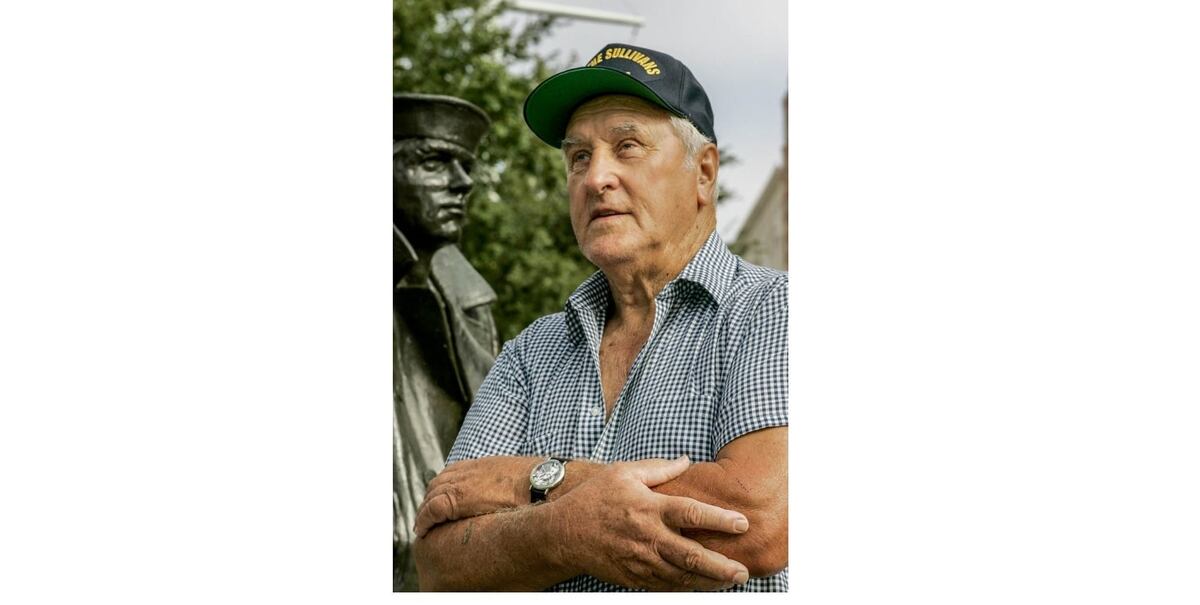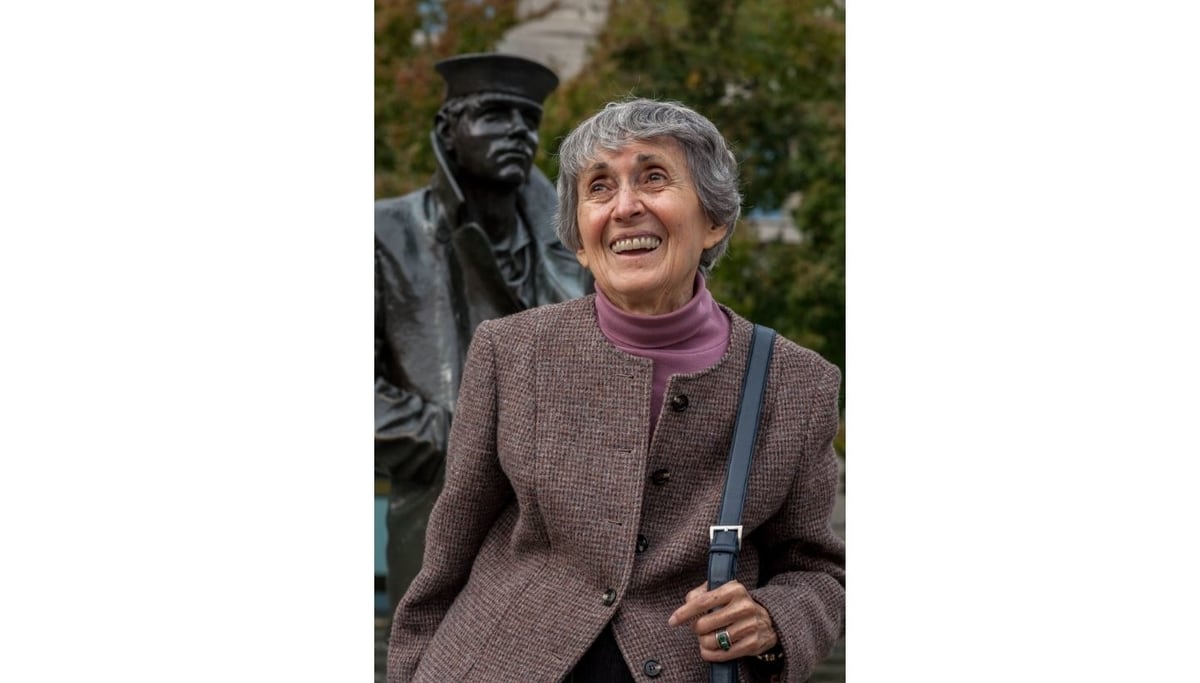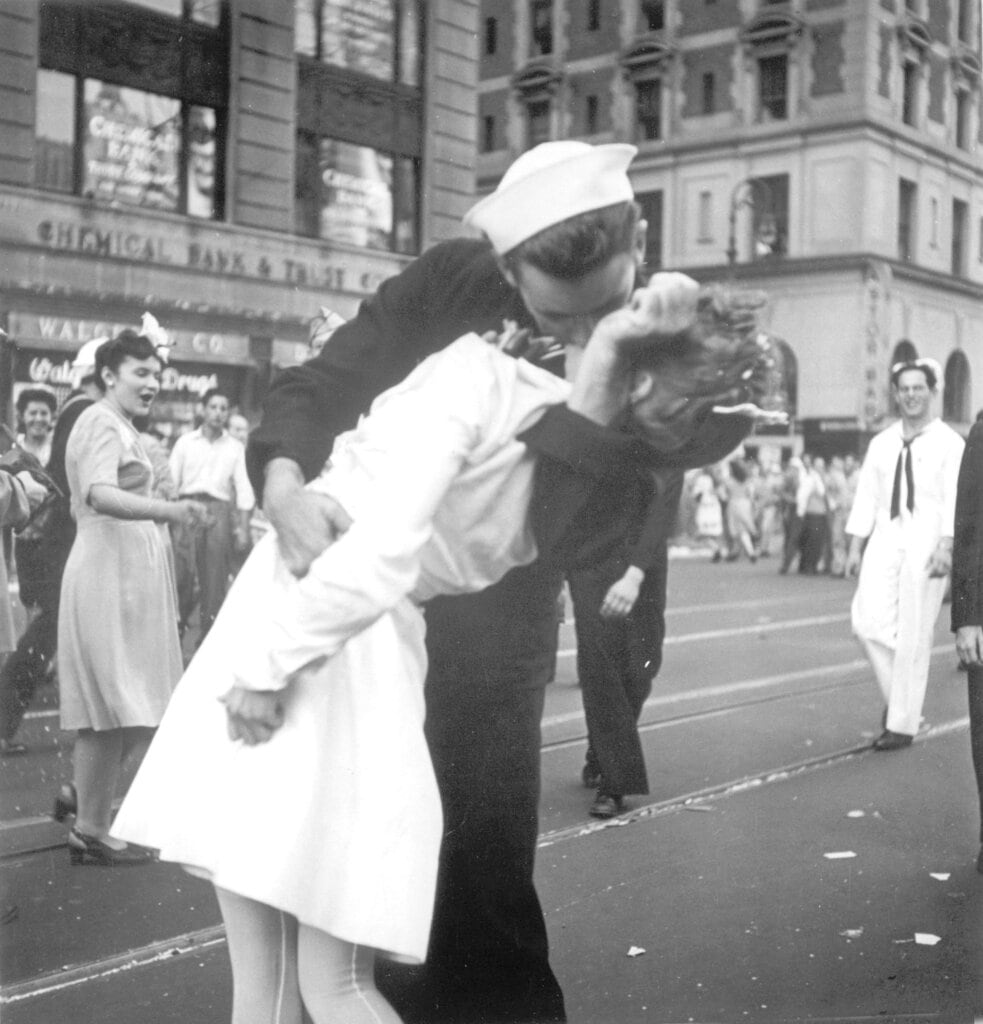One of the joys of being a reporter covering the Navy is how often you find yourself not only witnessing history but also getting to know those who made it.
Meeting Quartermaster 1st Class George Mendonsa, who passed away Feb. 16 at the age of 95, was a memory that will stay with me for the rest of my days — and, thanks to my story, it might become a memory for others long after we’re both gone.
You might not recollect George’s name but you probably know what he looked like on Aug. 14, 1945.
He was the “Kissing Sailor” in a pair of famous snapshots taken by Life Magazine’s Alfred Eisenstaedt and Navy photographer Victor Jorgensen.
The woman in his arms was Greta (Zimmer) Friedman.
The images came to symbolize the sudden relief felt by world after the most devastating conflict in human history.

On Oct. 4, 2005 at the Navy Memorial in Washington, D.C., I got the chance to talk to George about that moment.
And just over seven years later, on Oct. 27, 2012, I was able to share a similar session with Greta.
Greta spoke during a media event brimming with other reporters and photographers but my moment with George was spent alone with him, two old sailors swapping sea stories.
Frankly, his were better.
To understand the photo from V-J Day and the iconic kiss he shared with Greta, you have to put yourself in the context of that moment, Mendonsa told me.
He’d just come back to the United States on leave from the destroyer The Sullivans after two years of nearly constant combat in the Pacific.
During our talk, his mind journeyed back to the Battle of Okinawa, when Kamikaze planes hit the aircraft carrier Bunker Hill.
He spoke of seeing the horror of hundreds of sailors jumping from a burning flight deck into the sea and what he and his shipmates did to help the survivors with terrible burns, ferrying them to the hospital ship Bountiful.
"I saw all those nurses on board the Bountiful who assisted us getting the wounded on board. Their abilities and caring left a great lasting impression of nurses in my mind," he said.
George was in New York, waiting on a flight that would take him to Mare Island, near San Francisco, where The Sullivans was tied up. He’d gone to Times Square with his girlfriend, Rita, the woman he’d later marry.
He’d met her while home on leave in Rhode Island.
During those days, the United States had dropped two atomic bombs on the Japanese cities of Hiroshima and Nagasaki, and rumors swirled that Tokyo would surrender.
There wasn’t a stream of constant news in in 1945, only what the radio and newspapers announced, and Japan hadn’t called it quits.
That meant that the military continued to plan for the invasion of Japan, what he knew would be the bloodiest battle yet in an already brutal war and one The Sullivans would join.
"We were in Radio City Music Hall watching a show. Then someone began to pound on the doors," he said. "When the doors opened, people began shouting, ‘The Japs had surrendered.’ And the war was over."
He and Rita were strolling toward a subway station when he spied a woman he thought was a nurse.
"Everyone was celebrating, and I'd had a few drinks in me," Mendonsa recalled. "It was a real brief moment, honestly, and all my memories of the wounded being cared for by those nurses came back."
Greta was actually a dental assistant but in that moment he seized her in his arms and kissed her.
Then, without saying a word, he let her go and continued on his way.
Which is how Greta remembered it, too, telling me that she was “grabbed by a sailor” who kissed her before disappearing into the crowd.

Greta was a refugee from the Holocaust and she died in 2016 at the age of 92 in Richmond.
But 36 years earlier, she and George met briefly once more in Times Square to reenact their famous kiss for Life Magazine.
This time, they parted as friends.
And until they died, both remained proud of a split-second of shared history when they represented, awkwardly and breathlessly, a world finally at peace.
Mark D. Faram joined Navy Times in 1992 and has worked as a staff photographer and writer. He previously served for nine years as a Navy diver and photographer.
Mark D. Faram is a former reporter for Navy Times. He was a senior writer covering personnel, cultural and historical issues. A nine-year active duty Navy veteran, Faram served from 1978 to 1987 as a Navy Diver and photographer.





